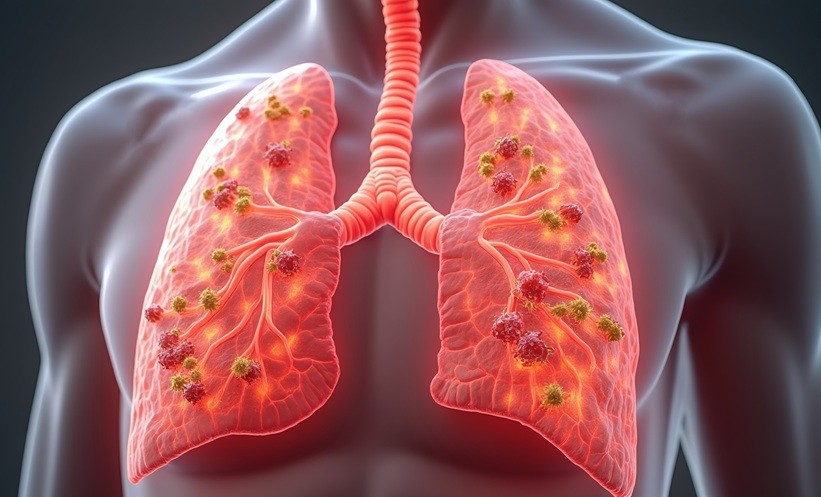INTRODUCTION
The demand for highly skilled respiratory clinicians grows as respiratory care becomes increasingly complex with rapid advancements in medical technology and treatments. Respiratory care providers, such as respiratory therapists (RT), must possess various clinical skills, from patient assessment to managing mechanical ventilation. Simulation-based education has become a vital tool for preparing RTs by offering a controlled environment where learners can practice technical skills, enhance critical thinking, and improve patient interactions. The purpose of this article is to examine the role of simulation-based learning in respiratory care education, highlight its benefits and challenges, and explore its potential as the future of respiratory care training.
THE ROLE OF SIMULATION IN RESPIRATORY CARE EDUCATION
Simulation-based education serves as a bridge between theoretical knowledge and real-world practice. By immersing students in clinical scenarios that replicate real-life situations, simulation helps improve knowledge, confidence, and self-efficacy in essential skills without placing patients at risk.1,2 Additionally, simulation education was necessary when more traditional education approaches were unavailable. During the COVID-19 pandemic, simulation was utilised as an alternative way for training programmes to continue providing education when students could not access clinical environments due to concerns of risks (to learners) and to preserve personal protective equipment.3
In addition to clinical preparedness, simulation-based learning facilitates interprofessional collaboration, a cornerstone of modern healthcare. Simulation provides a platform for learners to engage in interprofessional education (IPE), fostering teamwork, communication, and shared decision-making.
For example, Davis et al.1 noted in their thematic analysis of simulation use in entry-to-practice respiratory care programmes during the COVID-19 pandemic that respiratory care students worked collaboratively with physical therapy, nursing, occupational therapy, and medical school students on various topics such as mechanical ventilators and oxygen therapy devices. In 2018, Obaidan et al.4 utilised standardised patients to provide a training experience for nurses, physicians, and respiratory therapists looking to use prone positioning in patients with acute respiratory distress syndrome (ARDS). Sergakis et al.5 found that interprofessional simulation promoted teamwork, confidence, communication, and professional identity among nursing, respiratory therapy, medical dietetics, occupational therapy, physical therapy, pharmacy, medicine, and nurse practitioner students. By promoting collaboration in simulated environments, learners gain valuable experience working in interdisciplinary teams, preparing them for the complexities that exist in real-world settings.
BENEFITS OF SIMULATION-BASED LEARNING IN RESPIRATORY CARE
The benefit of simulation-based education is its ability to improve clinical competence. Simulations also allow students to practice critical procedures repeatedly until they achieve proficiency in a wide variety of topics. For instance, in a narrative review by Sreedharan et al.2 the authors noted several specific clinical areas that can be trained by simulation, including patient assessment (assessment of respiratory rate, respiratory pattern, breath sounds, and arterial blood gas sampling), therapeutic procedures (oxygen administration and airway management), mechanical ventilation, and advanced procedures.2
Another benefit of simulation is the safe learning environment it provides. In respiratory care, errors during critical situations, such as difficult airway management, can have severe consequences for patients. Simulation allows students to practice procedures in a controlled environment where mistakes can be corrected without harm.6 Beyond technical proficiency, simulation can improve decision-making, situational awareness and leadership, and interdisciplinary communication and collaboration.2,6 In simulated environments, students assess patient conditions, prioritise interventions, and adapt treatment plans to mirror the clinical settings. While the simulation experience may result in learning, educators can also utilise debriefing sessions to contribute to learning. Debriefing sessions help the learners reflect on their experiences and discuss their understanding.7
TYPES OF SIMULATION IN RESPIRATORY CARE EDUCATION
Several types of simulation are used in respiratory care education, each offering unique benefits. Simulation with manikins is commonly used in healthcare education, as higher-fidelity manikins can help simulate realistic physiological responses. Higher-fidelity simulators have been shown to improve learner performance, providing feedback on learners’ actions through verbal cues and visual displays. Interestingly, however, while higher-fidelity manikins are useful in healthcare education, increased fidelity does not always confer a better educational outcome than lower-fidelity manikins.8,9
Task trainers are devices designed to train key elements of procedures or skills being learnt, such as intubation or arterial blood gas sampling. These simulators allow students to practice technical skills in isolation, building a solid foundation before integrating those skills into more comprehensive simulation scenarios. For instance, students might practice intubation on a task trainer before applying those skills during a full simulation scenario requiring clinical decision-making, communication, and troubleshooting with a high-fidelity manikin.1,2,9
Standardised patients can also provide highly realistic simulation experiences involving a higher level of realism for the learner.1,4 Often, these are actors or individuals trained to simulate actual patients, allowing students to develop skills such as communication and patient education. This type of simulation is particularly valuable in respiratory care education, as it has been shown to increase student confidence and perception of preparedness for their clinical rotations.10
Virtual reality (VR) and augmented reality (AR) are also emerging as valuable tools in respiratory care education. These technologies allow students to engage in immersive, computer-based simulations without physical equipment. VR and AR simulations provide an alternative to traditional simulation methods, particularly in distance education settings where physical simulators are inaccessible.1,2
CHALLENGES IN IMPLEMENTING SIMULATION-BASED LEARNING
Despite its many benefits, simulation-based learning faces several challenges, particularly in its implementation. One of the most significant barriers is the cost of high-fidelity simulation equipment. Manikins, simulation labs, and the associated technology require substantial financial investment, which can be prohibitive for many educational programmes with limited budgets. This highlights the significance of respiratory care education initiatives that assess the outcomes and costs of different simulation modalities. As mentioned earlier, evidence suggests that higher-fidelity manikins may not necessarily influence the outcomes of simulation-based education in some instances.8,9
In addition to the financial burden, faculty training and time to coordinate effective simulations present another challenge.3 Effective simulation-based learning requires skilled instructors in respiratory care and the operation of simulation technology. Faculty must be trained to develop realistic scenarios, operate complex equipment, and facilitate debriefing sessions, all of which require a significant time commitment.1,2
FUTURE DIRECTIONS FOR SIMULATION IN RESPIRATORY CARE EDUCATION
Simulation-based education will likely play a more significant role in respiratory care training as technology and supportive literature evolve. One of the most promising growth areas is the increased use of VR and AR. These technologies are becoming more accessible and affordable, offering new possibilities for creating immersive and realistic learning environments.2
Another future consideration is the integration of remote learning opportunities into respiratory care education. The COVID-19 pandemic accelerated the adoption of remote learning technologies, including virtual simulation platforms that enable students to participate in clinical scenarios from any location. This flexibility makes respiratory care education more accessible, particularly for students who cannot attend in-person classes. This could be used beyond students in entry-level programmes, as it could also be beneficial in continuing medical education.
Finally, there is a pressing need for a considerable effort to address the lack of research in respiratory care simulation education. Despite advancements in technology and the growing use of simulation in healthcare education, the field of respiratory care still lacks sufficient evidence to inform best practices. The lack of data to inform educators on best practices hinders understanding of the effectiveness of various simulation modalities and their impact on learner outcomes, patient care, and cost efficiency. Efforts to generate robust data in simulation would enhance educational strategies and improve the overall quality of respiratory care education.
Key Areas for Study
The key areas include:
- comparative effectiveness of high-fidelity versus low-fidelity simulation
in respiratory care training; - impact of simulation-based education on clinical performance and patient outcomes;
- cost-benefit analysis of different simulation modalities in respiratory
care education; - best practices for integrating simulation into respiratory care curricula;
- long-term retention of skills and knowledge gained through simulation-based learning; and role of interprofessional simulation in enhancing team-based care.
CONCLUSION
Simulation-based education in respiratory care is widespread, offering students a safe and controlled environment to develop critical clinical and decision-making skills. However, a pressing need remains for more research to support best practices in this field. The lack of robust data hinders a comprehensive understanding of the effectiveness of various simulation modalities and their impact on learner outcomes, patient care, and cost efficiency. Significant efforts are needed to address these gaps to generate research and data that will enhance educational strategies and improve the quality of respiratory care education.







